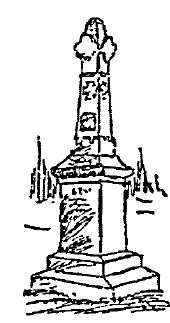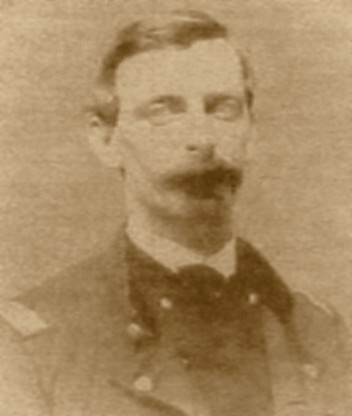Monuments at Gettysburg – 62nd Pennsylvania Infantry
Posted By Norman Gasbarro on November 18, 2014
The 62nd Pennsylvania Infantry Monument at Gettysburg is located south of the town of Gettysburg on DeTrobrand Avenue. It was dedicated on 11 September 1889, along with a large group of monuments paid for by the Commonwealth of Pennsylvania. The drawing of the monument (above) is from the Philadelphia Inquirer article describing the regimental histories and ceremonies. For a picture of the monument, see Steven Recker’s Virtual Gettysburg Web Site which has more information about the monument and the 62nd Pennsylvania Infantry.
A full description of the monument, its GPS coordinates, a photograph, and some of the history of the 62nd Pennsylvania Infantry can be found on the Stone Sentinels Web Site.
—————————
On 11 September 1889, the Philadelphia Inquirer included the following information on the 62nd Pennsylvania Infantry in its article on the monument dedications:
The 62nd in the Wheat. At sundown on 1 July, the 62nd left Middleburg in all possible dispatch for Gettysburg, where it was determined to concentrate for a decisive fight. Moving up the Baltimore Pike until it crossed Rock Creek, the division was posted to the left of the road and in the rear of Cemetery Hill. The heaviest part of the 62nd’s fighting occurred in the wheat field, surrounded by the woods, which seemed to be swarming with the enemy, and every avenue of escape was cut off. The loss in the 62nd was very heavy. Col. Sweitzer was wounded and had his horse killed under him. Major Lowry, Captain Edwin H. Little, and James Brown and Lieutenants Scott C. McDowell, Josiah P. Mouck and Patrick Morris were among the killed. Many of the men were bayoneted, Colonel Jeffords of the 4th Michigan, dying on the following morning of a bayonet wound. By order of General Sykes the division was posted during the night along the stone wall at the foot of the hill to the right of Little Round Top. By order of General Sykes the division was posted during the night along the stone wall at the foot of the hill to the right of Little Round Top, where it remained until the close of the battle. As it marched away from Gettysburg the regiment could but muster about 90 men.
The dedication programme will include: prayer, Rev. Daniel Swigart, Company D; history of monument, Captain William Kennedy; memorial address, “The 62nd at Gettysburg,” Commander W. J. Patterson; “Historical Review of the Regiment,” H. H. Snyder, Company M.
—————————–
James C. Hull was a 32 year old carpenter from Allegheny County, Pennsylvania, when he enrolled as Captain of Company A, of the 62nd Pennsylvania Infantry. On 27 June 1862, he was promoted to Lieutenant Colonel, the rank he held at the Battle of Gettysburg when he commanded the regiment. Less than a year after the battle, he was wounded at Laurel Hill, Virginia, and died 22 May 1864.
His Pennsylvania Veterans’ File Card from the Pennsylvania Archives is pictured above. James C. Hull stood nearly 6 foot tall, had a fair complexion, black hair and gray eyes.
Further information about him can be found at his Findagrave Memorial.
—————————–
Around the base of the Pennsylvania Memorial at Gettysburg are a series of plaques which, by regiment and company, note the names of every soldier who was present at the Battle of Gettysburg. The plaque for the 62nd Pennsylvania Infantry is pictured below. By clicking on the plaque it should enlarge so the names can be more clearly read. If a name does not appear, it could be that the soldier did serve in the 62nd Pennsylvania Infantry, but was not part of the regiment during its days in Gettysburg. There could also be errors on the plaque.
——————————-
The news clippings are from the on-line resources of the Free Library of Philadelphia.
 ;
;






Interesting footnote. My great-great-grandfather, William T. Kelly, served with Company F, 62nd PA Volunteers. When visiting the memorial at Gettysburg, I noticed that his name appears incorrectly spelled as William T. Kelley instead of Kelly. After surviving 3 years (7/18/61 through 7/13/1864) without injury, he became a police officer and was killed at age 34 in the Great Railroad Riot in Pittsburgh.